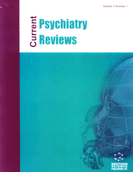Abstract
Drug treatment of OCD entails serotonin re-uptake inhibitors as first-line interventions. However, many patients with OCD do not benefit from standard treatments with SRIs; this proportion of patients may be approximately estimated between 40 and 50 percent of all subjects who are initially treated with these agents. One of the most studied approaches for treatment-resistant patients is antipsychotic augmentation, which consists in adding to the ongoing SRI an antipsychotic. Good results have been obtained when the augmentation was made with a low-dose first generation antipsychotic (haloperidol, for which a double-blind study exists, and pimozide). Given the side-effects profile of first generation antipsychotics, researchers have, in the last years, tried second generation ones as augmentation drugs. Risperidone, olanzapine and, more recently, quetiapine at low doses have been proved to be effective in a series of open label reports and in double-blind studies. The present paper will review all available studies concerning the use of antipsychotics in OCD, pointing toward benefits and potential side effects of this augmentation strategy. All of the studies that evaluated the addition of an antipsychotic in resistant OCD lasted 6-12 weeks; only a preliminary study lasted 16 weeks. A question that remains unresolved to date is then how long should a clinician maintain the antipsychotic augmentation in patients who responded to this strategy. In other words, is antipsychotic at low doses only necessary in order to elicit a response or is it also necessary in order to maintain it? Another way of looking at the problem is to examine whether the discontinuation of the antipsychotic in patients who responded to this strategy is associated with a worsening of obsessive-compulsive symptoms. We will present data on relapse rates in patients who responded to the addition of the antipsychotic and then discontinued it without discontinuing the SSRI.
Keywords: obsessive-compulsive disorder, anthipsychotics, treatment-resistance, olanzapine, risperidone, quetiapine
 1
1



